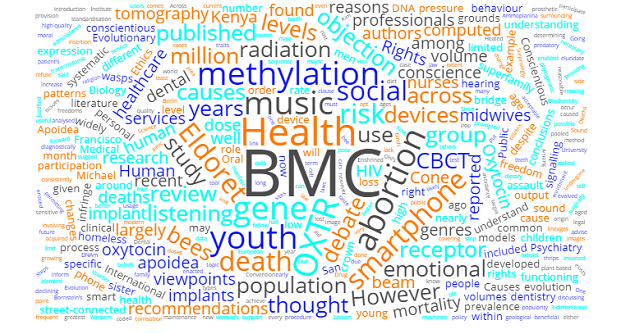
BMC Psychiatry: The role of oxytocin receptor gene (OXTR) DNA methylation (DNAm) in human social and emotional functioning: a systematic narrative review.
The neurotransmitter Oxytocin is widely known for its role in the regulation of social bonding as well as romantic attachment. It was initially discovered over 100 years ago after an extract derived from the human posterior pituitary gland was found to cause uterine contractions in pregnant cats. Since 1909 our understanding of this nonapeptide has somewhat progressed.
Impairment of methylation appeared to suggest increased prevalence of mood and anxiety disorders.
Oxytocin binds a G protein coupled receptor that is coded for by the OXTR gene. Binding of oxytocin to its receptor unleashes a signalling cascade within the cell, leading to both psychological and physiological changes. Much attention has been given to the OXTR gene as its expression essentially controls the rate limiting step in the oxytocin signalling process.
A meta-analysis published in BMC Psychiatry this month looks at the possibility of a link between OXTR gene methylation and corresponding changes in social and emotional behaviour in human populations.
While there is still insufficient evidence to draw strong conclusions, early findings point towards a correlation between specific elevated patterns of methylation and impaired cognitive and social emotional behaviour. Conversely, impairment of methylation appeared to suggest increased prevalence of mood and anxiety disorders.
To establish these patterns with greater certainty, more research is required to understand the relationship between OXTR gene methylation and OXTR expression.
BMC Public Health: Sound pressure levels generated at risk volume steps of portable listening devices: types of smartphone and genres of music.
 It is thought that approximately 36% of the world’s population currently use a smart phone, with around 2.1 billion worldwide users reported in 2016. A significant number of these smartphone owning individuals are likely to take advantage of music playing applications found ubiquitously across most smartphone models.
It is thought that approximately 36% of the world’s population currently use a smart phone, with around 2.1 billion worldwide users reported in 2016. A significant number of these smartphone owning individuals are likely to take advantage of music playing applications found ubiquitously across most smartphone models.
However, listening to music on a smartphone or personal listening device comes with a risk.
The World Health Organisation (WHO) have warned many young adults are at risk of developing recreational noise induced hearing loss due to frequent exposure to noisy environments. It is thought that nearly 50% of young people aged from 12- 35 years of age in developed counties are exposed to dangerously high levels of music through their personal listening devices.
Smartphone manufacturers have now implemented their own recommendations for minimum volumes at which hearing loss may occur. However these volumes vary, even within different smartphone models issued by the same company.
In BMC Public Health, authors Gibbeum Kim and Woojae Han put 6 smartphones to the test, using four genres of Korean pop music to determine the first risk volume level as defined by each device.
The results indicated a considerable 8-dB difference in sound pressure levels detected across the six devices, with dance-pop music having the highest output level of the genres tested. Based on these conclusions, the implementation of an international standard for safe use output volume is suggested across all devices.
BMC International Health and Human Rights: Causes of death among street-connected children and youth in Eldoret, Kenya.
It is common knowledge that homeless people will have lower life expectancy on average than their housed and settled counterparts. One recent study estimated the homeless youth of San Francisco to have a mortality rate that was 10 times that of the general population. Drug related deaths and suicide featured as the most common causes.
However, little information exists on the causes of youth mortality in low and middle-income countries. A recent study published in BMC International Health and Human Rights has documented the causes of death among street connected youth in Eldoret, Western Kenya.
The causes of death of in Eldoret differ considerably from those in San Francisco. In Eldoret, HIV accounted for 37% of all deaths, killing 59% of females included in the study and roughly a quarter of all men. Among the male population, the greatest cause of death was assault, accounting for nearly 50% of recorded deaths in men.
Deaths for reasons such as these are largely preventable. The authors advocate appropriate responses such as targeted HIV treatment programs and child protection systems to decrease the prevalence of assault and HIV and thus avoidable youth mortality in these areas.
BMC Evolutionary Biology:Phylogenomic analysis of Apoidea sheds new light on the sister group of bees
 This study published in BMC Evolutionary Biology investigates the evolutionary history of apoidea, a superfamily that includes apoid wasps and bees. A barrier to understanding the evolution of apoidea has been the difficulty in determining the geological age of bees as well as their phylogenetic origin.
This study published in BMC Evolutionary Biology investigates the evolutionary history of apoidea, a superfamily that includes apoid wasps and bees. A barrier to understanding the evolution of apoidea has been the difficulty in determining the geological age of bees as well as their phylogenetic origin.
Michael Ohl’s group from the Institute for Evolution and Biodiversity Science in Berlin have pooled and analysed target DNA enrichment sites and transcriptomic sequence data, covering all major lineages in the apoidea superfamily.
The Ammoplanina, a family of predatory wasps, began to lose their taste for thrips around 128 million years ago. Over time, they acquired a plant-based diet and evolved into what we now know as the modern bee. Further research must be done to understand the specific traits that enabled this radical dietary change.
BMC Medical Ethics: Conscientious objection to participation in abortion by midwives and nurses: a systematic review of reasons
Enshrined in the European Convention on Human Rights, is the right to freedom of thought conscience and religion. The freedom to manifest these beliefs, however, can be limited by law if thought to pose a risk to public health for example, or infringe on the rights and freedoms of others.
Conscientious objection was widely accepted, despite largely polarised viewpoints on either side of the debate.
Under most abortion laws enacted across the developed world, a conscience clause is included, permitting the conscientious objection of healthcare professionals to opt out of providing such services on moral grounds.
Heated debate has ensued regarding the extent to which the rights of healthcare professionals to refuse provision of abortion services should be limited, in case this should infringe on a woman’s legal right to the service.
This review, published in BMC Medical Ethics, aims to elucidate the reasons given for declining to participate in abortion on grounds of conscience. Surprisingly, it was found the viewpoints of midwives and nurses were largely absent from this debate, despite being the recommended providers of abortion services by the WHO. Across the literature studied, conscientious objection was widely accepted, despite largely polarised viewpoints on either side of the debate.
Going forward, better representation of all relevant healthcare professionals in the debate and the consideration of all viewpoints is necessary when discussing such a sensitive topic, in order to inform beneficial health policy in this area.
BMC Oral Health: Cone beam computed tomography in implant dentistry: recommendations for clinical use

Between the ages of 35 to 44, 69% of US citizens are reported to have lost at least one tooth. 15 million of this population will have undergone crown and bridge replacements for missing teeth, while only 3 million of these have been reported to have had dental implants. However this number is said to be growing by half a million every year.
Dental implants may be surgically inserted into a patient’s jaw, in order to support the introduction of a prosthetic element such as a crown or bridge. Cone beam computed tomography (CBCT) is a useful tool, providng high-quality, 3-dimensional images of surrounding tissues to aid this process. The low cost and reasonable dose of radiation administered has caused the popularity of this method to increase over recent years.
In BMC Oral Health this month, Michael Bornstein’s group from the University of Leuven in Belgium review current literature to provide recommendations for the future use of CBCT imaging. Due to relatively high radiation doses, its clinical usage should be justified. For example, the authors advise to limit CBCT to cases involving post-operative complications following dental implant insertion, as well as the avoidance of this procedure in long term maintenance and follow up of dental implants.
A lack of standardisation of radiation dose and image quality between different CBCT machines further prompted calls for more research to consistently achieve the lowest diagnostically acceptable radiation dose possible.
Comments